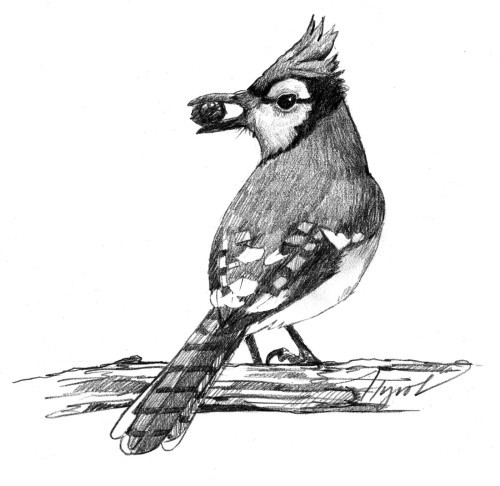
Were it not for compelling evidence to the contrary, I’d believe I descended from birds – migratory birds in particular. So familiar to me are the urges and behaviors of migratory birds, I’m pretty sure I blushed, or at least looked around sheepishly, when learning of them in my undergraduate ornithology class. Take hyperphagia (excessive eating), if you will. Every fall, like a songbird building fat reserves for its epic flight, I ransack my environment for calorie-dense foods. As the temperature drops, my hunger grows. By November, I’m buttering Fig Newtons.
I also experience a human equivalent of zugunruhe, the fun-to-say word that explains a restlessness that cues birds to migrate. Each autumn I waste hours on my computer shopping for flights south, where surviving winter does seem easier. Moreover, I relate completely to pre-migration molting, when birds upgrade to sleek new flight feathers; my annual desire to upgrade to faster cross-country skis feels positively constitutional.
Yet, despite my urges to go, here I am, wintering in Lyme, New Hampshire, making the most of it with what I have. I dare say, the adaptations of the birds that also stay here and make do are as awe-inspiring as the aforementioned adaptations of those that go. Take, for instance, the blue jay, whose ability to survive our harsh winters is a cerulean feather in evolution’s cap.
Like the northern cardinal, tufted titmouse, white-breasted nuthatch, and other species that grace our winters, the blue jay will grow approximately 25 percent more feathers, fluff them to create insulative air pockets, and weatherproof them with body oil. In other words, the bird makes itself a parka! Like humans, birds shiver to generate body heat and maintain temperature. But shivering is energetically expensive. So, during the coldest of periods these birds will involuntarily decrease their heartrate, respiratory rate, and body temperature to conserve heat and energy.
Another fascinating adaptation to conserve heat and energy is the countercurrent heat exchange system in birds’ legs. This system enables birds to maintain a body temperature of approximately 100 degrees while their feet are all but frozen. According to the Cornell Laboratory of Ornithology, a tight network of blood vessels allows for the transfer of heat from blood leaving the body to blood returning to the body so as not to chill the bird or lose significant heat as blood circulates through exposed feet. Moreover, due to birds’ super-fast circulation, blood doesn’t stay in their feet long enough to freeze.
While it’s tempting to lump birds into two flocks: those that migrate and those that don’t, according to Phil Brown, bird conservation director at the Harris Center for Conservation Education, we shouldn’t. “Migration is not one thing, it’s a broader story that varies among and within species,” he says. According to Brown, even the blue jay will make a mini migration when, as happened last year, certain food crops fail.
Some species are hardwired to migrate, unable to resist the urges and instincts of their evolutionary life history strategy. These birds will go regardless of food availability or weather conditions. The broad-winged hawk, New England’s most common breeding raptor, will ride thermals (upward currents of warm air) rising off ridgelines all the way to South America. While it will touch down to feed along the way, no quantity of prey will convince it to curtail its trip. Other species, Brown says, are more facultative in their strategy. Red-tailed hawks are a good example. Some members of the species will winter in their breeding grounds while other individuals, depending on size, age, and sex, will be pushed south.
The dark-eyed junco is even more practical, moving to lower elevations or slightly south for more favorable wintering conditions. Bald eagles will alter their diet based on food availability, eating more carrion (dead animals) than they do during other seasons.
Shivering, eating, and napping my way through winter, perhaps I have as much in common with the bird species that stay as with those that go. And while I appreciate the dietary adaptability of the bald eagle, I just want to say that buttered Fig Newtons are as low as I go.


Discussion *